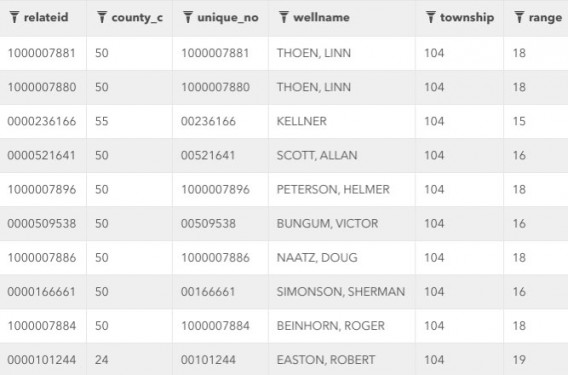
Research Data Storage
Storage for frequently-accessed research data
Overview
Research Data Storage (RDS) provides professionally managed secure, replicated, shareable storage space on the University of Minnesota’s network. It is intended for research data that is actively being used. This service is intended to meet the storage needs of researchers, faculty, Principal Investigators (PIs) and research group members. It is suited for data files such as datasets, lab workbook data, research group papers, and other research data like interview files and videos.
This service is able to support private restricted, private-highly restricted (Non-HIPAA), and public information that does not contain private healthcare information or any other personally identifiable information.
Highlights
- Availability: The service will be offline 1–2 times a semester to perform security patching and regular maintenance.
- Data redundancy: We provide redundancy within a storage array to help protect data from hardware failures.
- Replication: Data is replicated to another physical site to protect data in case of facility failures.
- Snapshots: We take snapshots of all data every eight hours and are kept for thirty days to protect data from unintended file deletion.
- Access management: Access is done via SMB through DFS, and security is through NTFS group membership at the share level.
- Self-service file restores: Data can be restored from snapshots for Windows, Mac, and Linux computers.
- Drive Mapping: Allows for many types of standard drive mappings (e.g., Net Use/Net Map/Mount).
- Security: RDS is professionally managed and regularly goes through review to meet security and encryption standards.
Getting Started
- Select a storage service. If you are not sure that the Research Data Storage service is suited for your data, security, and access needs, you can
- Use the University’s self-service Storage Selection Tool. Based on how you answer the questions in the tool, services that match your needs will be displayed; and/or
- Connect with your local IT if you need additional help identifying the appropriate storage solution. Each unit has an established Authorized Requestor that can approve your storage request, or in some units, can make the request on your behalf
- Request data shares.
- If you are familiar with the Research Data Storage service, you can use the Research Data Storage form to request storage for your research needs.
- If you are new to Research Data Storage, we recommend using the Research Data How-To Guide for information and step-by-step instructions for
- Requesting a Share
- Moving Files into Research Data Storage
- File Limitations
- Accessing Your Data
- Additional Information
Requirements
- All users must have University Internet IDs.
- You must be connected to the University network or VPN when off campus.
- Must be onboarded through the Customer Experience Standardization (CESI) process.
Appropriate Use
Be a good neighbor. Research Data Storage (RDS) is a shared storage space for Principal Investigators (PI) and research group members across the University of Minnesota. For the best experience, follow these guidelines for appropriate use.
- RDS is an appropriate storage service for data that is active and needs to be accessed quickly and regularly.
- RDS is appropriate for data files including datasets, lab workbook data, research group papers, interviews, videos, and other research data files.
- RDS is not intended to be used for processing high performance workloads, databases, virtual machines, or other transactional workloads (e.g.STATA, SAS, ArcGIS, etc.) For these data needs, access the Storage Selection Tool to find the best fit.
- Applications should be run off of local disk to the host while the data that the application interacts with is stored on RDS.
- High-IO load needs should be arranged in consultation with the Research Cyberinfrastructure Champions (RCC) group at rcc.umn.edu.
- Not intended for personal use.
- Appropriate data security classifications for RDS are:
- Private Restricted
- Private-Highly Restricted (Non-HIPAA)
- Public
- For guidance on how to appropriately classify your data, see the University of Minnesota policy library on Data Security Classifications by Type.
Data Classification
The University of Minnesota policy library provides guidance on how data is classified by type.
Appropriate data security classifications for RDS are:
- Private Restricted
- Private-Highly Restricted (Non-HIPAA)
- Public
Grant Application Facilities Statement
The text below can be used as a template for referring to the handling of data storage in a research grant application:
“Data will be stored on Research Data Storage (RDS), a secure, locally shared storage space on the University of Minnesota network. This storage has data protection and security features (such as access control and encryption at rest) that include replication in two separate data centers and snapshots taken every 8 hours.”
Get Help
Intended Audience
Cost
Planned Cost/Allocation for 2024
No-Cost Allocation (up to 20TB)
In 2024, the Office of Information Technology (OIT) will establish Research Data Storage (RDS) no-cost data storage allocations at 20TB per:
- Principal Investigator; or
- Shared Research Facility, Center, and/or Labs
Cost model (20TB +)
For budget planning purposes, please note that the following cost model is planned to be implemented in 2025. RDS Storage in excess of 20TB can be purchased at $135/TB/year; billed monthly ($11.25/mo).
This cost includes professional management of services by experienced IT professionals, automated billing through the University’s EFS system, and ongoing support.